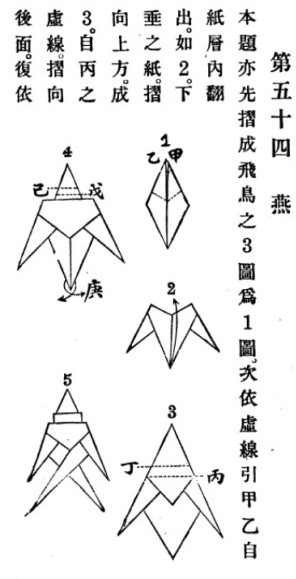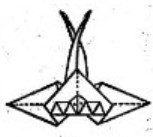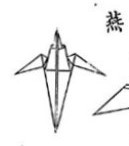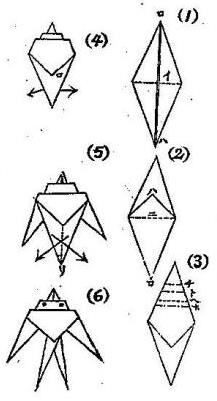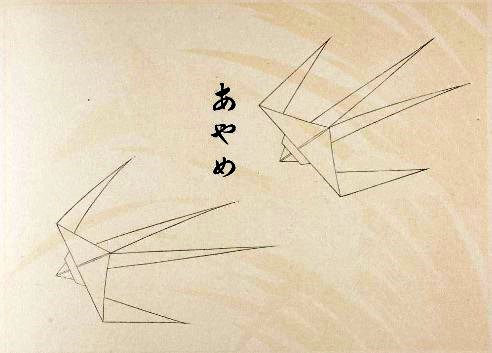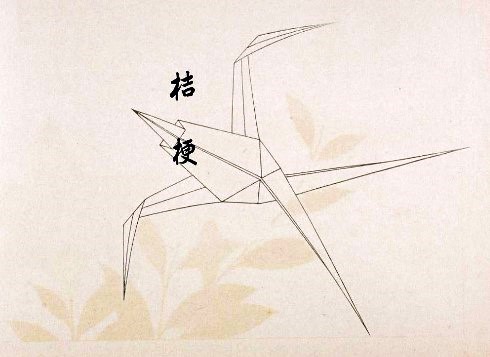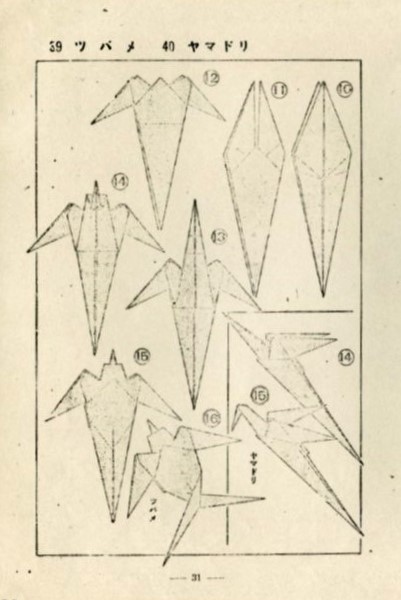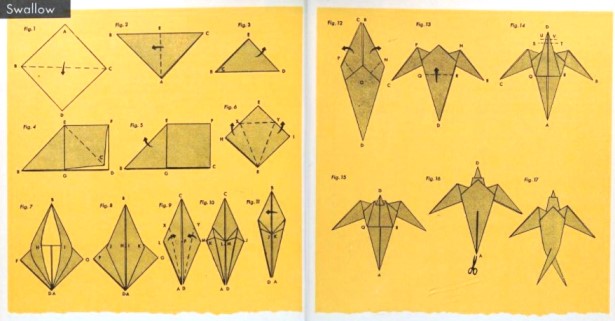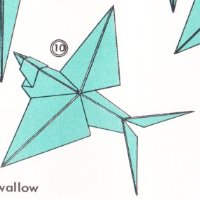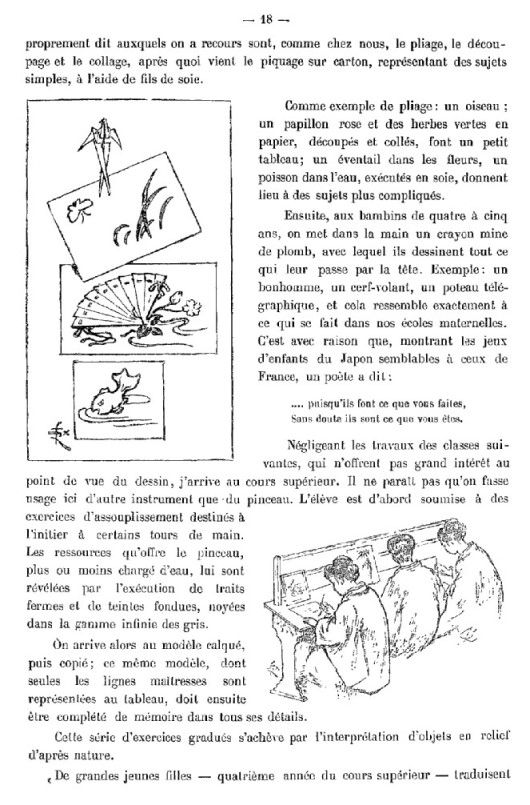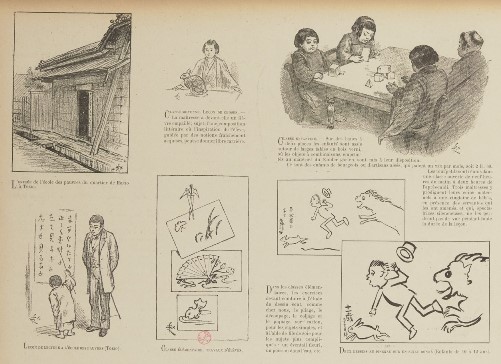| The Public Paperfolding History Project
Last updated 4/12/2023 x |
|||||||
| The Cut Swallow / The Woodcock | |||||||
| This
page is being used to collect information about the
history of the origami design that I call The Cut Swallow
and its uncut variant The Woodcock. Please contact me if
you know any of this information is incorrect or if you
have any other information that should be added. Thank
you. Although this is almost certainly originally a Japanese design, it appears first in a Western European source. There are many versions / variations of this design. ********** In China (and in publications by Chinese authors) 1914 Diagrams for this design, titled just 'Swallow', appear in 'Zhe zhi tu shuo' (Illustrated Paperfolding), compiled by Gui Shaolie, which was published by the Commercial Press in Shanghai in Ming guo 3 (1914).
********** In Japan (and in publications by Japanese authors) 1904 A version of this design with a cut and crossed tail appears in 'Shukouka Kyoju Shishin: Maiji Haitou' by Hyojiro Nakagaki, which was published by Kenseikai in Tokyo in 1904. There are no diagrams, only a drawing of the finished design.
********** 1905 A drawing of what appears to be the same design, although in this case uncut, appears as 'Swallow, in 'Shukouka Kyohon : Liron Jishuu Souga Setsumei' by Kikujiro Kiuchi, Rokushiro Uehara and Hideyoshi Okayama, which was published by Shigebei Takase in Chiba in 1905.
********** The design also appears: 1908 In 'Origami zusetsu' (Illustrated Origami) by Sano Shozo, which was published in Tokyo in 1908.
********** 1931 In 'Origami (Part 1)' by Isao Honda, which was first published in Japan in 1931. The diagrams also show how the same folding sequence can produce a 'Woodcock' (in step 13). This second design appears to be uncut.
********** 1935 In 'Origami Moyo, Book One', by Kawarazaki Kodo, which was published by Unsodo in Japan in 1935, contained two prints showing birds which look like versions of the Cut Swallow design.
********** 1944 In 'Origami Shuko' by Isao Honda, which was published in 1944. The diagrams also show how the same folding sequence can produce a 'Woodcock' (in step 15). This second design appears to be uncut.
********** 1951 As 'Swallow' in 'Origami to Kirinuki' by Saburo Ueda, which was published by Kokkado in Tokyo, most probably in 1951.
********** 1959 In 'Origami: Book Three' by Florence Sakade, which was published by the Charles E Tuttle Company in Rutland, Vermont and Tokyo in 1959.
********** 1960 As 'A Swallow' in 'All About Origami' by Isao Honda, which was published by Toto Bunka Company, Limited in Tokyo in 1960.
********** A version of the same design in which the wings have been opened out appears in 'Pocket Guide to Origami: Bow-Wow Book', by Isao Honda, which was published by the Asahi Origami Club, Tokyo in 1960.
********** In Europe and the Americas 1900 The issue of 'Revue des arts décoratifs' of 1st January 1900 contains a chapter written by Felix Regamey and titled 'L'enseignement du Dessin dans les E'coles de Files au Japon' which contains a picture of the Cut Swallow.
********** 1902 The same material was subsequently republished in ' Le Dessin et som Enseignement dans les Ecoles de Tokyo' by Felix Regamey in Paris in 1902, the only substantial difference, being that the words 'un galiote' were omitted from the text, probably for reasons of layout.
********** 1904 The same image was also published in Livraison 4 of 'Le Japon en images' by Felix Regamey, in 1904.
********** |
|||||||
